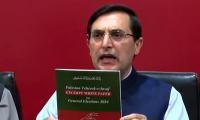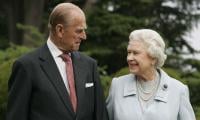Daily Jang emerged as an Urdu weekly in pre-Partition India, getting its name from the war environment, in what was a charged political climate. After Pakistan came into being, Jang was ready to make its entry into the field of Urdu journalism. That was a time with few noteworthy Urdu publications, especially dailies. Though, some literary journals would soon appear on the scene. In the 60s, and 70s, there were other Urdu papers like Nawa-i-Waqt, Mashriq, Musawat, and others, but many of these faded away.
Mir Khalil-ur-Rahman was the dynamic mind behind the paper that would become a trendsetter. His innovative ideas for an Urdu daily and the zeal and dedication to get the message across to the (literate) public set a standard for the paper, as well as Urdu journalism. Mir Khalil-ur-Rahman’s vision and ideals have guided Jang in preserving its identity and credibility over the years.
Papers in any language are directly linked to the cultural ethos of the country where they are published, as well as the immediate environment; the local cultures of Boston, London, and Calcutta were reflected in the publications from these cities in the 18th-19th century. While Jang reflected on the colonial environment and the struggle of the Muslim League in its early years, after Partition, the paper reflected the literary/cultural environment of the time. This could be seen mirrored in the columns of Jang. Apart from prominent political contributors like Mahmood Sham, the literary side was equally rich, with couplets by Raees Amrohi, humorous pieces by Ibn-e-Insha, the Waghera Waghera column by Majeed Lahori enthralled the readers with its sprightly wit and humour, and the articles were based on logical analysis and authentic information.
Daily Jang in the 60s and 70s was very different in format; it had more graphic and catchy content as well as format. Apart from the main section, a four-page bluish section was pictorial, with international content that was appealing to the readers. In addition, on weekends, there was a huge section of movie ads, along with a weekly supplement. Nostalgia enthusiasts still miss that.
It was Mir Saheb’s idea to increase the outreach of the newspaper to include varied content that would appeal to a wide and diverse audience.
While the ‘news section’ is common in every paper, it is the op-ed section that really defines a paper and its identity. The editorials, and op-ed pieces, to some extent, also reflect the ideology of the newspaper and its political tilt. Editorials included a balanced analysis of current affairs and not vehement criticism or exaggerated sentimental standpoint. This savvy political sense of Mir Saheb saved the editorial from obeying any restrictions or facing pressure from external institutions as a consequence.
Mir Saheb had the ability to identify ambitious writers and reporters whom he trusted and allowed them to work confidently. Amidst so much pressure, and tense political environment, his forbearance can be gauged by one of his statements about his experience as a journalist, “my likings and dislikings for a columnist or a newsman do not count if he is dear to the readers and beneficial for the organisation.”
Another tactic of Mir Saheb was that he published numerous editorials to reduce the emphasis from one editorial and create a dissipated effect. For this reason, Jang’s credibility has remained unmatched till today; it is always the foremost priority of readers as it always gives importance to news of national importance.
Over the years, the format changed, with the first-page news squeezed somewhat, and ads have been given more space. The op-ed contributors have remained prominent and fiery, serving as ‘opinion makers’; the illustrious list includes Saleem Safi, Hamid Mir, Sohail Warraich, and Mazhar Abbas; renowned author-poet Kishwar Naheed’s writings also add to the literary content. The above commentators cover social and political themes in the national context, offering critical analyses of prevailing situations, often volatile. For the common man, as well as the intellectuals, and perhaps the policy-making circles, these provide a base for their information, as well as views. This analysis would often be quoted in national debates as an ‘authentic’ viewpoint.
It is interesting to note that Jang’s news coverage, as well as commentaries, reaches a majority of the Urdu-reading public, as well as a section of the English-reading, providing a ‘pulse,’ shaping political and social outlooks. It is generally believed that audiences for English and Urdu papers are different, and the views of the ‘general public’ are shaped by the vernacular press. It is not just what is read in the paper in the offices and marketplaces, but what is shared and discussed at tea houses and traditional barber shops. Jang provides the basic content for that, and that makes its social role crucial.
When the country went through a period of turmoil, in the 70s, and 80s, Jang maintained its traditional coverage and reporting. An adverse environment in recent years, again, put a strain on maintaining its objectivity and credibility.
Mir Khalil-ur-Rahman always gave priority to the well-being of the workers of the Jang Group of Newspapers. While other newspaper magnates opposed the formation of trade unions, Mir Khalil-ur-Rahman lent his support to it. During his lifetime, Jang Group was always the first to implement the Wage Awards for journalists and other workers in the newspaper industry.
The contribution of Daily Jang toward Urdu journalism, as well as serving the cause of the Urdu language is noteworthy. This, considering that newspapers are generally losing readership and Urdu readership is generally under more strain. Hopefully, over time, the situation shall improve, and papers like Jang resuscitate the Urdu-reading culture.
-The author is a former faculty Quaid-i-Azam University, Islamabad. He can be reached at: pakirish@yahoo.com
Hafiz Naeem castigate the ruling elite for their monopolization of state resources
Total count of infected districts reaches 33 for the year 2024
Spokesman disclosed that Adeel and Zain had orchestrated a plot to assassinate Federal Minister Riaz Hussain Pirzada
Revenue of the Labour Department had been increased so that the packages for the labourers should also be enhanced...
EV Manufacturers have proposed amendments in Customs Act to Ministry of Industries and demanded allowing SKD parts of...







